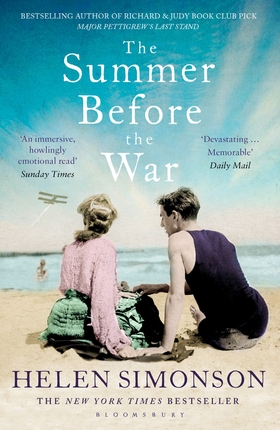Both of my novels, Major Pettigrew’s Last Stand and The Summer Before the War are rooted in place; East Sussex, a childhood home and still an emotional heartland for me.The County and the towns and villages are almost characters in their own right and whether contemporary, or set in Edwardian times, they anchor and reflect the action and characters. I’ve been told I create immersive settings in my work and so I thought I’d try to share a few ideas on how to achieve the same.

Pick a setting you can stand to be in for months or years
Writing should feel more like taking a holiday than cleaning your closets or going to the dentist. For me, a certain distance from the everyday hassles of life is important in choosing a novel’s setting and so while I have lived in New York for thirty happy years I chose to set both my novels in Sussex. Of course I have visited England frequently. However, I always rent perfect little cottages for a week, meet the family for extended dinners in all the loveliest pubs, repeat my favourite walks and eat my list of favourite foods. My England does not suffer from cold rain, warm beer and political grimness. I have often been asked if I plan to set a novel in Brooklyn Heights, the very social-comedy-worthy enclave in which I live. I answer that I would love to, but I’d have to move away first.
Make sure the ground is solid under your characters
While character and voice are central to my writing, they must be rooted in place. If not, I feel unmoored, floating. I do not sit and write until I’ve taken time to close my eyes and allow the scene to grow in my mind. When I feel as anchored to the place as to the next action, then I know my characters will feel the same way. The setting of a scene is a huge part of making your characters real. They will gain added dimension from being reflected in the shop window, passing through the station turnstile, nibbling a scone in the bow window of a tea shop. Their emotions and their motivations will be impacted and enlarged by the landscape; by a sudden rain shower, or the particular blue of a harebell in a weedy verge. The world from which they grow is as important to a character as ‘terroir’ (the specific environmental climate) is to a French cheese.

The difference is in the detail
No setting should be generic. Only Hemingway can get away with ‘the hills are brown, the wineskin is brown, then we all drank wine’ (I’m paraphrasing wildly). It’s hard to give examples but in my latest novel, I describe the home of local matriarch, Agatha Kent, as being ‘a medieval hall bred with a couple of thatched cottages” and mention its plump hostess emerging ‘from a living room with many lamps’. In the kitchen ‘with its high, sunny windows…there were two bowls of raspberries on the kitchen table and Cook was straining cream into a bowl.’ None of these images is revolutionary but they are each specific and they layer on top of each other to create not just any old home, but the home that could only belong to Agatha. Every locale should be fixed as real in the reader’s mind. Even somewhere as generic as an airport can be pinned down and made immediate. How does the light bounce off the video departure boards? Who is blocking the way with their enormous cart? How does it smell emerging from Heathrow into the damp English morning at 6 am? The very first lesson I learned in writing is that it is always the unusual detail that pins down an image. And the setting of the novel deserves the highest level of specificity.
You can be at home anywhere
The techniques I have described can be key to taking you far beyond settings you know. I hate ‘write what you know’ and I prefer to answer unknown questions and explore new ideas. But if you can describe the bow-fronted tea shop you know, you can describe one in 1914. If you can communicate the smell and harshness of the airport, you can take us to the airport on Mars. And if you’ve ever been caught in a sudden summer rain shower on a hot city pavement, you can show us the smell of cold rain hitting the hot dust on those Spanish hills. The details, textures, smells and emotions of places we know can be used as a spark to light the bigger blaze of our imaginations.
Is there a danger to all this hanging about in the wings, moving the scenery and adjusting the drapes? Of course there is. I could linger in a sun-dappled wood with no people for twenty pages! But the opposite is also true. I can’t play video games because it makes me ill to watch avatars running in that particular slow-motion, floppy-legged way I associate with nightmares. I feel the same way when characters are stumbling in the fog of an ill-defined literary world. I hope you find these suggestions of use in your writing. Meanwhile I’m intrigued by the idea of that new English tea shop in the Mars colony...
Helen Simonson was born in Buckinghamshire and spent her teenage years in a small village near Rye in East Sussex. Her debut novel, Major Pettigrew’s Last Stand, was an international bestseller, a Richard & Judy Book Club pick, and was translated and published in twenty one countries. A graduate of the London School of Economics, Helen is married, with two grown sons, and currently lives in Brooklyn, New York. The Summer Before The War is her second novel and is also an international bestseller. Visit Helen's website or browse her titles on Bloomsbury.com
Comments